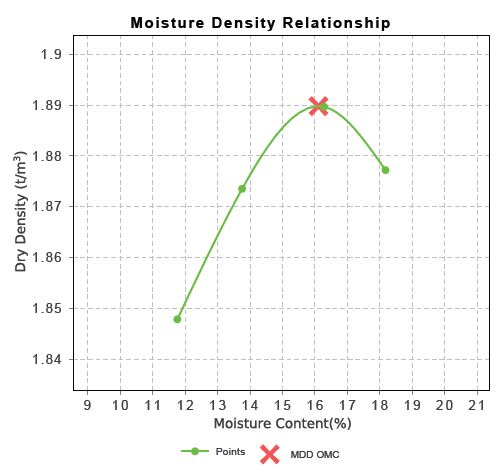TailignsEddie
Geotechnical
- Oct 20, 2018
- 5
Hi all, I have a project where the contractor struggles to meet the moisture content specification for a compacted sand fill. The specification is 95% of SMDD, -3% to +3% of OMC. The contractor easily meets the density ratio, but is often out of the OMC range on the dry side. I know that moulding moisture content is important for clay fills like dam cores or landfill liners because there is a relationship between permeability and moulding moisture content, and with dam cores you want to avoid generating excess pore pressures in very tall dams etc. etc.
My question is, since the required density has been achieved for the non-plastic sand, is it OK to ignore the contractor’s failure to meet moisture content spec? For reference, the worst results I have seen is they are dry by about 4.5% of the OMC (which they have determined from MODIFIED density tests, not the Standard method, which the spec requires). I did not develop the spec; I have inherited this from another consultant. The contractor usually hits >100% Modified Max Dry Density. I realise this means they are a pretty long way (on the dry side) of the SMDD OMC (whatever that may be).
I’m struggling to find a reason to hold them to the moisture content specification. Any help would be much appreciated!
My question is, since the required density has been achieved for the non-plastic sand, is it OK to ignore the contractor’s failure to meet moisture content spec? For reference, the worst results I have seen is they are dry by about 4.5% of the OMC (which they have determined from MODIFIED density tests, not the Standard method, which the spec requires). I did not develop the spec; I have inherited this from another consultant. The contractor usually hits >100% Modified Max Dry Density. I realise this means they are a pretty long way (on the dry side) of the SMDD OMC (whatever that may be).
I’m struggling to find a reason to hold them to the moisture content specification. Any help would be much appreciated!

